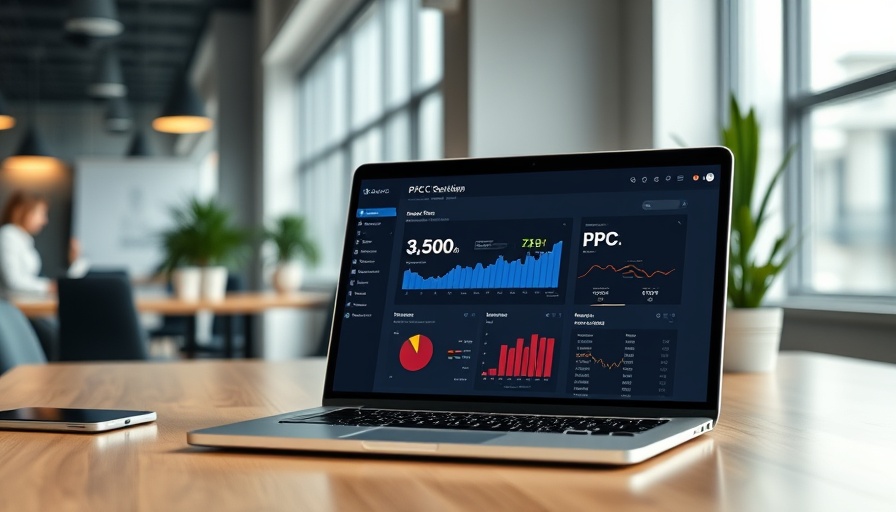
The Power of PPC for Moving Companies: Driving Bookings Effectively
The moving industry in the U.S. is thriving, generating approximately $86 billion annually and witnessing consistent growth even through economic challenges. With over 7,000 moving companies competing for attention, the need for effective marketing strategies has never been more critical.
PPC (Pay-Per-Click) advertising presents an opportunity for moving companies to boost their visibility precisely when potential customers are searching for their services. This article dives deep into how PPC can elevate your moving company, enhance bookings, and ensure a robust return on investment (ROI).
Understanding the Significance of PPC
As stated, PPC advertising allows companies to appear in front of consumers right when they need services. A staggering 97% of consumers engage in online searches for local businesses, indicating that solid online visibility is vital for success. Even more compelling, stats show that individuals directed to a website through PPC ads are 50% more likely to convert than those who reach the site organically. For moving companies, this means more inquiries, more bookings, and ultimately more revenue.
Maximizing Your Revenue with PPC: Key Metrics
To effectively harness PPC, moving companies must understand critical metrics, including Cost Per Click (CPC), Conversion Rate, and Cost Per Lead (CPL). For example, if you allocate a monthly budget of $3,500 for Google Ads and achieve a CPL of $28, you could generate around 125 leads. Assuming an 18% conversion rate, that's about 22 confirmations, resulting in significantly higher total turnover compared to initial advertising costs.
Strategy Development: Crafting Effective Google Ads Campaigns
Creating a successful PPC campaign involves several steps. First, establish realistic goals, such as enhancing brand awareness or increasing customer leads. Next, choose between text ads, which target keywords directly, or display ads that can capture consumer interest through visually engaging content. It is essential to know your audience's intent; focusing on high-intent keywords will vastly increase the efficiency of your campaigns.
Additionally, keyword research is fundamental. Tools like Google's Keyword Planner can help find relevant keywords to attract the right audience. Negative keywords should also be implemented to avoid irrelevant searches that waste your budget and skew metrics.
Ad Fatigue: Keeping Your Campaigns Fresh
Ad fatigue can diminish campaign performance over time. By regularly refreshing ad creatives, diversifying targeting options, and optimizing bidding strategies, moving companies can combat this issue. If you repeatedly see the same ads, engagement will drop. Ad performance can also be improved through A/B testing to find the most effective combinations of images, text, and offers, ensuring your company stays top of mind with potential movers.
The Importance of Quality Landing Pages
A well-optimized landing page directly correlates with conversion rates. This page should be tailored specifically to the campaign it corresponds with, showcasing attractive rates, clear calls to action, and easy access to booking forms. Fast-loading, user-friendly landing pages can significantly reduce bounce rates and encourage interactions.
Targeting: Getting Your Ads in Front of the Right Eyes
Successful PPC campaigns rely increasingly on targeting specific demographics. For instance, the average mover is often between the ages of 18-34 and may include individuals with one or two children. Crafting campaigns that speak to this group’s specific needs can significantly enhance engagement rates. Additionally, consider geographical targeting—American movers overwhelmingly stay within their home state, so tailoring ads to local services can yield better results.
When to Advertise: Seasonal Strategies
Timing is crucial in the moving industry. The majority of moves occur between May and September. Hence, allocating higher ad budgets during peak seasons, while scaling back in the slower months can optimize spending efficiency. Creating seasonal messaging that resonates with customer urgency can also increase bookings during these rush periods.
Conclusion: The Road Ahead for Moving Companies
As the moving industry continues to expand, harnessing the power of PPC can set your company apart from the competition. By mastering the strategies outlined in this article—from optimized ad campaigns to an informed understanding of your target audience—you can propel your moving business to new heights.
Ready to take your PPC campaigns for your moving company to the next level? Don’t miss out on potential bookings—get started today and watch your business thrive!
 Add Row
Add Row  Add
Add 




Write A Comment